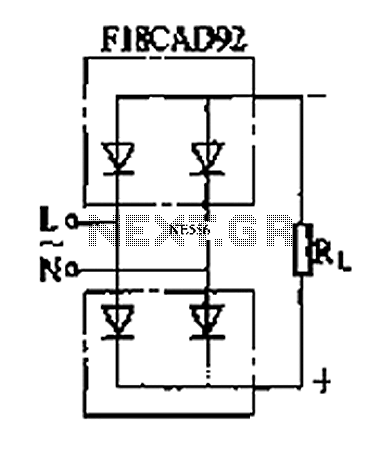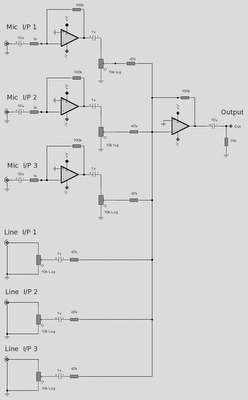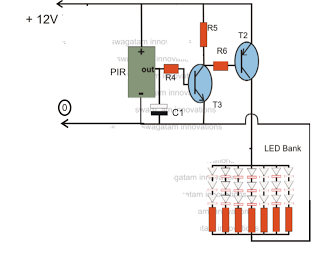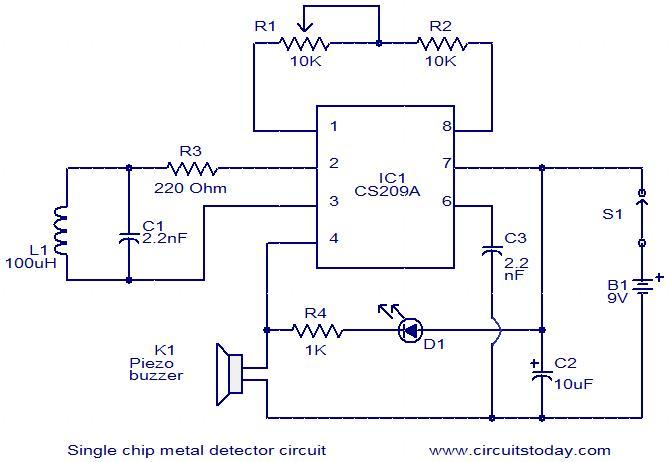
Pressure Sensor Alarm Circuit Schematic
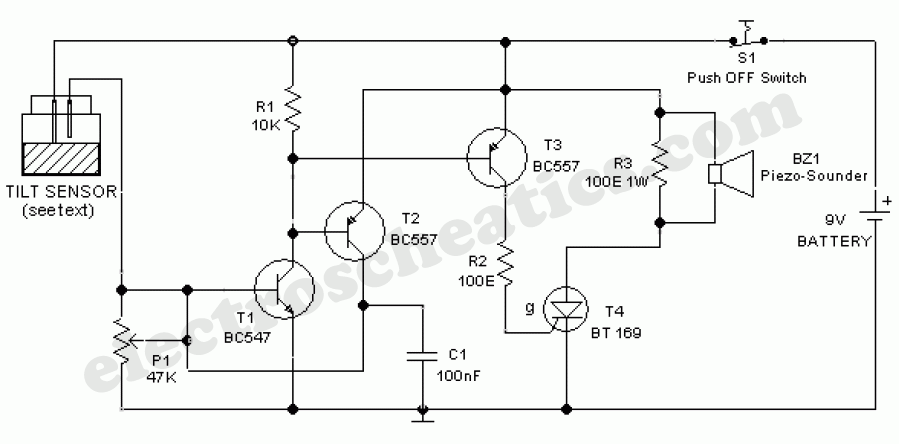
The simple pressure sensor alarm is constructed using a few inexpensive and readily available components. The operation of this circuit is straightforward and self-explanatory. When powered by a 9V compact battery, the active piezo sounder at the output of IC1 emits a beep for a brief period before entering an idle state. When the pressure sensor element, which is a piezo-ceramic wafer, is gently tapped, it generates an electric pulse that activates the MOSFET T1 through the associated components, thereby re-enabling IC1. Consequently, the piezo sounder begins to beep for a short duration, determined by the in-circuit values of R3 and C2. The piezo sounder at the output of IC1 can be substituted with a low current 6 to 9 V electromagnetic or solid-state relay to control external loads. The component values for T1, R3, and C2 are not critical, allowing for experimentation with different values to adjust the circuit to specific requirements. Pressure sensors in the form of piezo wafers are widely available from reputable hobby electronics component suppliers.
The simple pressure sensor alarm circuit consists of several key components: a 9V battery, a piezo sounder, a MOSFET (T1), an integrated circuit (IC1), and passive components such as resistors (R3) and capacitors (C2). The primary function of the circuit is to detect pressure changes via the piezo-ceramic wafer, which acts as a sensor. When pressure is applied to the wafer, it generates a voltage signal that is fed into the gate of the MOSFET T1. This signal turns on the MOSFET, allowing current to flow through the circuit and reactivating the integrated circuit IC1.
IC1 is responsible for controlling the output signal to the piezo sounder. The duration of the beep produced by the piezo sounder is influenced by the values of R3 and C2, which form an RC timing circuit. By adjusting these component values, the user can modify the beep duration to suit their preferences. Additionally, the piezo sounder can be replaced with a relay, which would enable the circuit to control larger loads or other devices, making this alarm system versatile for various applications.
The circuit's design allows for flexibility in component selection, as the values of T1, R3, and C2 are not strictly defined. This flexibility encourages experimentation, enabling users to tailor the circuit's performance to their specific needs. The availability of piezo sensors in the hobby electronics market further facilitates the assembly of this straightforward yet effective pressure sensor alarm system. Overall, this circuit exemplifies an accessible project for electronics enthusiasts, offering a practical application of pressure sensing technology.The simple pressure sensor alarm is built around a couple of readily available cheap components. Working of this circuit is straight forward and self-explanatory. When the circuit is powered by a 9V compact battery, the active piezo-sounder at the output of IC1 starts beeping for a short time and then goes into idle state. Whenever, the pressure sensor element (Piezo-ceramic wafer) is gently tapped, mosfet T1 is fired by the electric pulse from the sensor through related components and IC1 is again enabled by T1. As a result, the piezo-sounder starts beeping for a short duration, set by the in-circuit values of R3 and C2.
Piezo-sounder at the output of IC1 can be replaced with a low current 6 to 9 V electromagnetic/solid-state relay to control external loads. Likewise, values of components T1, R3 and C2 are not very critical. You can experiment with another values to tune the circuit as per your requirements. Pressure sensors (in piezo-wafer form) are widely available with reputed hobby electronics components dealers.
🔗 External reference
The simple pressure sensor alarm circuit consists of several key components: a 9V battery, a piezo sounder, a MOSFET (T1), an integrated circuit (IC1), and passive components such as resistors (R3) and capacitors (C2). The primary function of the circuit is to detect pressure changes via the piezo-ceramic wafer, which acts as a sensor. When pressure is applied to the wafer, it generates a voltage signal that is fed into the gate of the MOSFET T1. This signal turns on the MOSFET, allowing current to flow through the circuit and reactivating the integrated circuit IC1.
IC1 is responsible for controlling the output signal to the piezo sounder. The duration of the beep produced by the piezo sounder is influenced by the values of R3 and C2, which form an RC timing circuit. By adjusting these component values, the user can modify the beep duration to suit their preferences. Additionally, the piezo sounder can be replaced with a relay, which would enable the circuit to control larger loads or other devices, making this alarm system versatile for various applications.
The circuit's design allows for flexibility in component selection, as the values of T1, R3, and C2 are not strictly defined. This flexibility encourages experimentation, enabling users to tailor the circuit's performance to their specific needs. The availability of piezo sensors in the hobby electronics market further facilitates the assembly of this straightforward yet effective pressure sensor alarm system. Overall, this circuit exemplifies an accessible project for electronics enthusiasts, offering a practical application of pressure sensing technology.The simple pressure sensor alarm is built around a couple of readily available cheap components. Working of this circuit is straight forward and self-explanatory. When the circuit is powered by a 9V compact battery, the active piezo-sounder at the output of IC1 starts beeping for a short time and then goes into idle state. Whenever, the pressure sensor element (Piezo-ceramic wafer) is gently tapped, mosfet T1 is fired by the electric pulse from the sensor through related components and IC1 is again enabled by T1. As a result, the piezo-sounder starts beeping for a short duration, set by the in-circuit values of R3 and C2.
Piezo-sounder at the output of IC1 can be replaced with a low current 6 to 9 V electromagnetic/solid-state relay to control external loads. Likewise, values of components T1, R3 and C2 are not very critical. You can experiment with another values to tune the circuit as per your requirements. Pressure sensors (in piezo-wafer form) are widely available with reputed hobby electronics components dealers.
🔗 External reference
